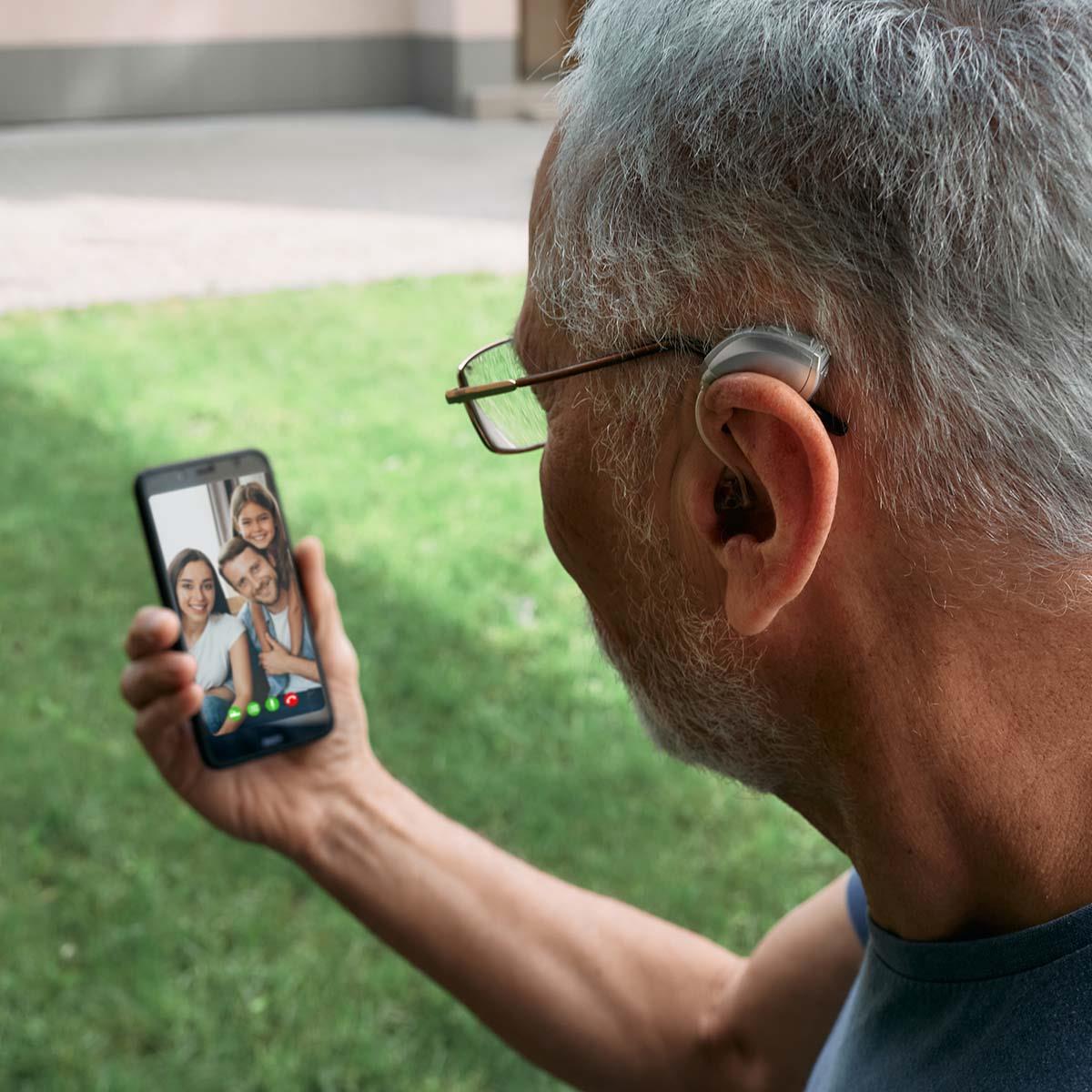Three keys of hearing aid success: Get close, get practicing, and get tech-savvy
It was not that long ago when hearing aids were available in two colours: dull beige and despairing beige, and where I did my best work with a tiny little screwdriver. And let us not even talk about the whistling. Things have improved, haven’t they?We can agree that hearing aid technology can and will disrupt the negative cascade of hearing loss on communication, sound enjoyment, and brain stimulation.
In keeping with these amazing improvements, the advertising for devices also reflects a more modern approach to wearing hearing technology. I appreciate depictions of people living well with hearing aids. I like that it speaks to possibility. Truly, have you ever seen a happier bunch of people on bikes, dining out, pushing kids on swings, and making important statements in meetings?
There are a few things from yesteryear that remain true and steadfast in ensuring an optimal outcome with hearing aids. We run the risk of thinking that technology can replace some of the work, frustration and perseverance required when embarking on something new. I find, however, if you are new to wearing devices or even have been for a while, these three keys provide a quick check on how well you are set up for success in any of your communication encounters.
Key 1: Hearing aids are amazing (5 stars, would recommend), but proximity is the name of the game.
A hearing aid is a sophisticated, tiny computer that tucks behind the outer ear.
It sometimes useful to remember this with a lyric. So, sing with me: it is an itsy-bitsy teeny-weeny gold or silver ear Lamborghini 😊 and because of its size, and location on the head, the hearing aid’s abilities are optimised when we situate ourselves less than a meter from the sound source.
There is not a hearing aid in the traditional sense of the word, which can compensate for distance from the speaker. Evolutionarily speaking, you will notice that even without hearing aids, we are uncomfortable when we are more than a meter or so apart during a conversation– if one leans back too much, the communication partner instinctively will lean in to maintain the optimal communication distance (try this).
There are ways to extend that range with accessories and strategies, but as a rule of thumb, your take-away message is:
Move closer!
Typical scenario: I put the devices on for church, and then afterwards during fellowship, I could not hear the person across the table from me. Prompt: How far am I from the speaker?
Key 2: Hearing aids make an enormous difference, but practice gives the outcomes and the oomph.
Hearing aids are essential in treating many forms of hearing loss, but it is only part of the solution. Often, we run the risk of disappointment because we think our adjustment will be as seamless as adjusting to new glasses or a new phone.
The essence of treating hearing loss is about restoring communication which implies that other people are involved (tricky) and many listening environments are involved (trickier). We must consider the environment, the listening situations we find easy and difficult, the unhealthy habits that we have picked up through the years, how our communication partners tend to speak to us, and their habits all inform this part of the process. A deliberate and specific practice mindset is essential, especially when you have become withdrawn and avoidant and nervous in certain listening environments. It is a team effort.
So, get busy practicing!
Typical scenario: I put the devices on to meet my friends at the coffeeshop but forgot how to change the programme to the noisy setting. I still enjoyed myself, but I did not offer much.
Prompts: Have you been able to have a go at changing the programmes before outside of the hearing clinic? Do you remember some of the strategies and suggestions around listening in noisy environments?
Key 3: Hearing aid apps are amazing but assume a certain level of tech-savviness.
Most hearing technologies available allow for phone connectivity via Bluetooth. Having a hearing aid App on your phone allows you to customise their listening based on your typical listening environments (noisy or quiet), your activities (such as in the car as a passenger or driver, listening to music, going for a walk) and many other things. Tremendous! if you are familiar with your phone and are thus able to use your phone with confidence. We all have different abilities and levels of comfort with technology and while there is certainly no expectation of being The Oracle of Smartphone, having some idea of how to navigate the device will set you up for success.
So, get tech-savvy!
Typical scenario: I have this phone but only use it for phone calls and Facetime and WA. I do not think I can do fancy apps and stuff. Prompt: how quickly did you become comfortable with using the phone for phone calls, Facetime and WA?
Victor Hugo reminds us that perseverance is the secret to all triumph. I like that very much, as much as I like Einstein’s statement of insanity is doing the same thing expecting a different result. Both are true in hearing rehabilitation. The three keys here provide the basic truths to return to when faced with a new listening challenge. My hope is that we continue to be amazed by the technology, inspired by the brochures, mindful of the work required, and clever at persevering at the right things!
Until next time,
Dunay

